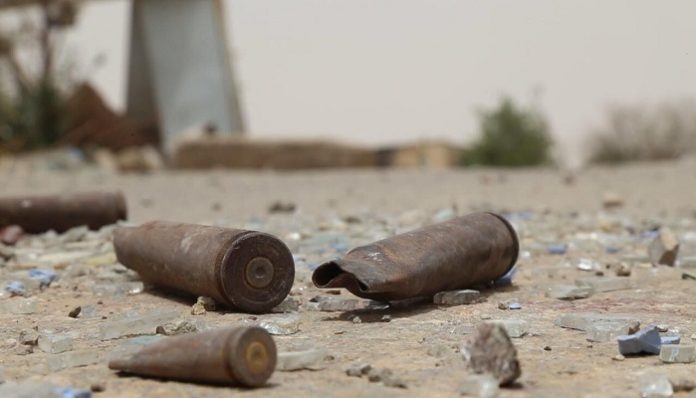Pak Sahafat – The Central Criminal Court of Iraq in the Al-Rasafa Appeals Division of Baghdad issued the death sentence of 14 accomplices of crime of Spiker in 2014 at the hands of the ISIS terrorist group.
According to Pak Sahafat News Agency, the Media Center of the Supreme Judicial Council of Iraq announced that these terrorist criminals were involved in the execution of Spyker’s massacre; A crime that led to the murder of more than 1,700 young military men in training.
About a month ago, the Iraqi Popular Mobilization Organization announced in a statement that the judicial system of this country has sentenced one of the perpetrators of Spiker’s crime to death. This person is accused of murdering 600 martyrs of Spiker’s crime in Salah al-Din province of Iraq.
Spyker air base is located about 15 kilometers west of Tikrit in Salah al-Din province of Iraq.
On this day, June 12, 2014, Iraq witnessed one of the most heinous crimes in modern history; 1,700 young people from the Shiite provinces of southern and central Iraq were beheaded or shot en masse in the palaces of Saddam, the former dictator of Iraq, in the city of Tikrit, located north of Baghdad. Some sources say that the actual number of Spiker’s martyrs is 2,500 people.
After many years have passed since this horrible incident, the images of the beheading of a large number of young people and their blood that stained the Tigris River, as well as the scenes of their mass shooting by the ISIS terrorist group, still shake the conscience of every human being.
Read more:
These young people were students of the Iraqi Air Force whose training course at the Spiker barracks coincided with the fall of Mosul, the capital of Nineveh province, to the hands of the ISIS terrorist group. The newly deployed and unarmed youths, fearing an ISIS attack on the barracks despite the warning of their commanders not to leave the base, were deceived by some nomads belonging to the Iraqi dictator Saddam’s family in Tikrit, who promised them to accompany them to Samarra and from there they can go to their city and country.
Nomads close to Saddam’s family, as a sign of loyalty to ISIS, informed this terrorist group in Mosul about the arrest of these young people so that a team from ISIS would be sent to Tikrit the next day.
In the evening of the same day, the tribes of Tikrit discussed the fate of the arrested soldiers and the final opinion was to kill all of them as revenge for Saddam’s blood, and on the same night, each of the tribes killed a number of young people in the way that they won and this is how the first crime happened.
About 400 soldiers managed to escape from the palaces of the former dictator, but in the city of Tikrit, they were identified one by one and killed in the street.
The next day, when the ISIS terrorist group reached Tikrit, a large part of the Iraqi youth had been killed, and the ISIS terrorist group continued to publish videos on social networks, completing their mass execution by shooting or beheading them by the Tigris river.
After the end of ISIS sedition, many co-accused in this crime were arrested and interrogated; Later, it became clear that the number of martyrs of this horrible crime was more than 2,500 people and not 1,700 people.
This crime is considered one of the most horrific crimes of the ISIS attack on Iraq, which happened two days before the fatwa of the Supreme Religious Authority of Iraq on jihad and the formation of the popular force Al-Hashd al-Shaabi.
“Tareq Al-Mandlawi” added that this government institution, in cooperation with the mass graves unit and the Al-Hashd al-Shaabi organization, was able to discover the mass graves related to Spiker’s crime in Tikrit’s presidential palaces.
He stated that 1,235 bodies have been discovered so far, of which 900 martyrs have been identified by DNA testing.


